open main page for all woods open page 2 for articles
SPALTED WOOD
There are various forms of spalting, all of which involve biodegrade of wood cells and result in various characteristics. One such form is white rot which has its own page on this site. Another is black line spalting, which is primarily what this article discusses and shows.
Spalting is due to invasion of the wood fibers by fungal spores, which then form colonies and continue to grow in the wood. Since spalting is a form of rot, the discoloration is usually accompanied by a degradation in the strength of the wood fibers and the wood can become quite punky and eventually just rot out entirely. Spalting, if caught at the right time and stabilized, can result in some beautiful effects that can be use to great effect in various wood objects, especially (but not limited to) turned objects such as bowls. Some spalting results in what are formally known as "zone lines".
Spalting can be very sharply defined black lines in which case it is sometimes called "black-line spalting" --- in some trees, oak for example, spalting is rarely black-line and in fact can be VERY vague, amorphous, blotchy black or dark-gray areas. In some woods, spalting causes some color changes other than black. I've seen some spalted woods that are very colorful.
Zone lines may appear as single or double lines. This is the result of the spore colonies creating a protective barrier either around themselves (single-line spalting) or in what is basically a "war" with a neighboring colony (double-line spalting). Both are shown clearly in the link below.
Spalting can be encouraged by keeping a dead tree moist. Spalting is a form of decay and if spalted wood isn't stabilized at the right time, it will just rot. Wood that is really heavily spalted and still completely solid is rare, since advanced spalting is generally accompanied by enough decay to soften at least some areas of the wood.
Examples:
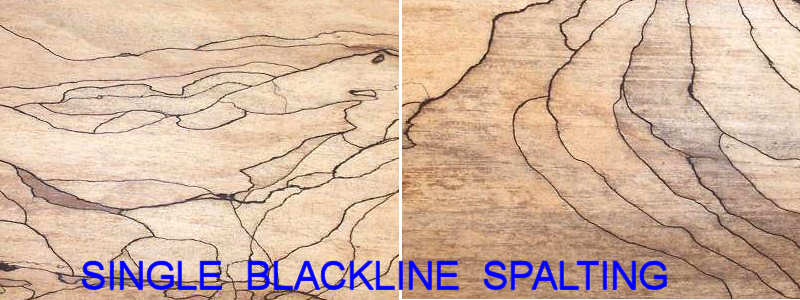
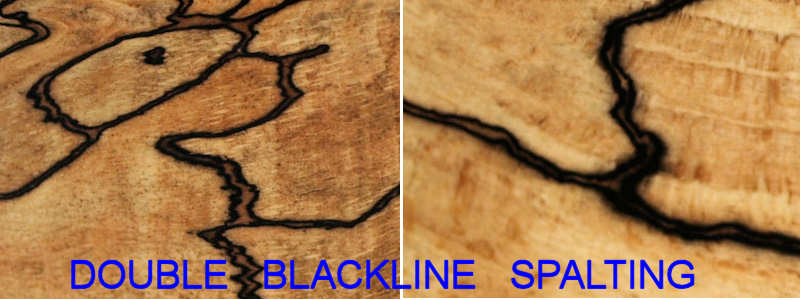
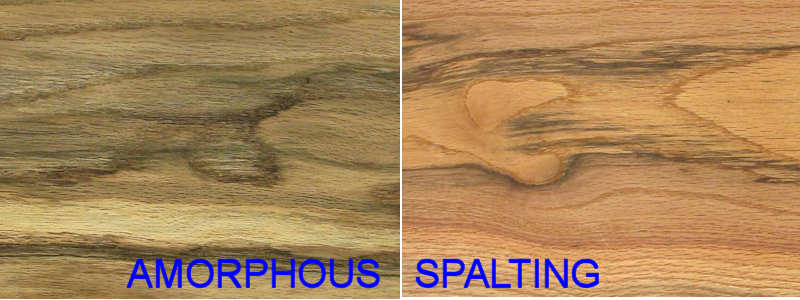
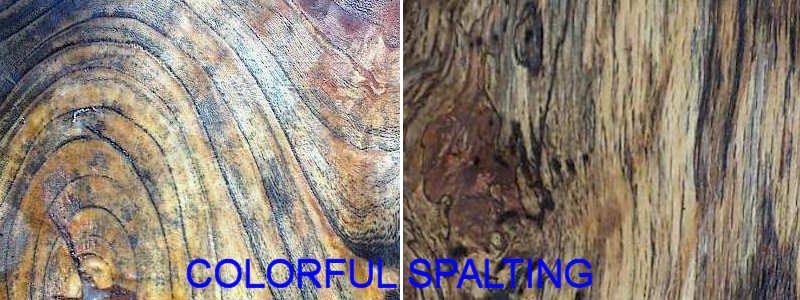
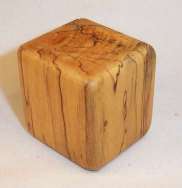
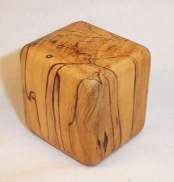
my willow tree: In 1985 I had a beautiful weeping willow tree in the back yard of the house I lived in, but over time it died and I had all but the stump removed, figuring I would save the cost of the stump removal by doing it myself, with a blithe disregard for my tendency to procrastinate. I did dig it out finally, but it took me a few years to finish the job and the wood spalted. I found a piece of solid area and cut it out and that's where this little cube came from. There were other areas in the wood that had a pretty much identical amount of spalting but which were already soft, or even pulpy and rotten, by the time I noticed the spalting. This piece is totally solid and is just under 2 inches in each dimension. I treated it with Lindseed Oil after sanding it, about 15 years ago, and haven't touched it since. The pics make the wood look just slightly more golden yellow than the tan color that it really is. The spalting can be seen better if you click on either pic to get an enlarged pair.
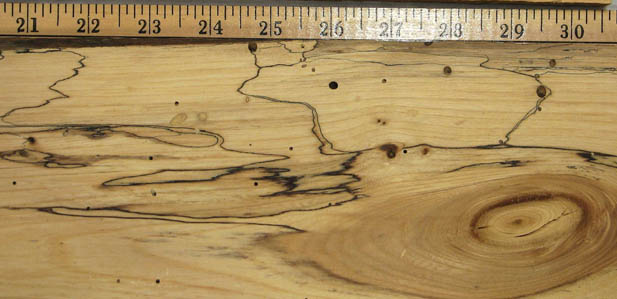
spalted elm with both levels of enlargement. This is what is sometimes called "black-line spalting", as opposed to spalting in some woods such as oak where the spalting is more like just a vague stain in the wood.
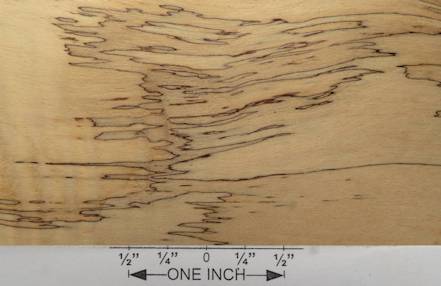
Eastern cottonwood with some very nice black line spalting. Both levels of enlargement are present so you can see the lines in great detail
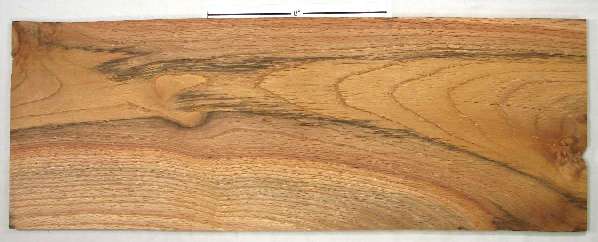
spalted red oak --- this is the opposite of "black line spalting" in that the spalting is very vague and splotchy
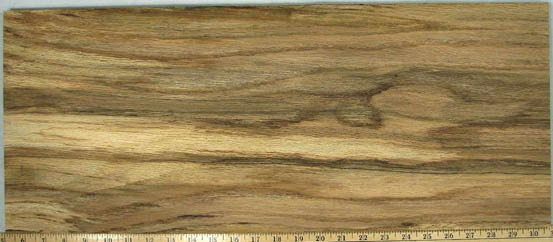
spalted white oak --- in this one, the spalting is even worse than in the red oak above in that the spalting is just an amorphous discoloration of the wood.
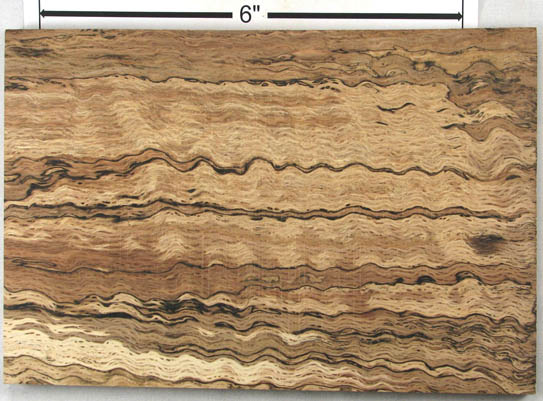
an amazing spalt in white oak --- not only is it black-line spalting, but it combines with a grain wave and some color variation to produce a really remarkable piece --- I've never seen another even close to being like it.
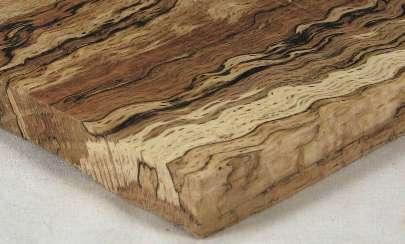
end grain of the piece directly above
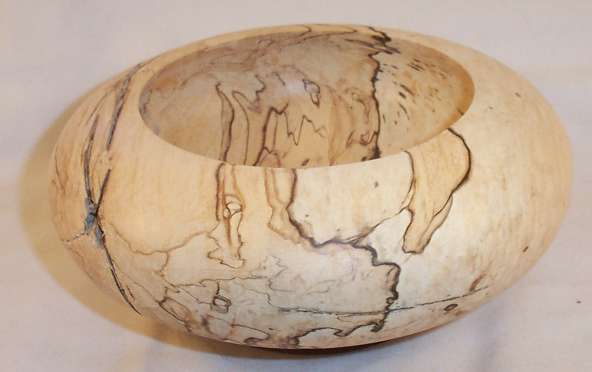
spalted maple bowl turned from a section out of a large slab of spalted maple given to me by Jim Glynn (thanks, Jim). One enlargement is available and there is a substantial flaw on the left side of the bowl (a crack).
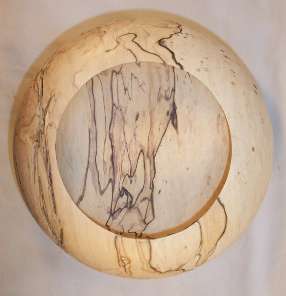
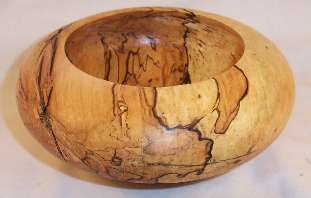
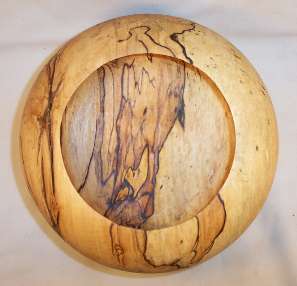
other views of the same bowl --- the two on the right are after the application of a coat of natural stain. Most maple has a strong tendency to yellow with the application of most moistening agents and this is no exception. In fact, I found that this yellowed even more than is the average and that may be due to the fact that spalted wood is usually relatively soft (this piece certainly is) and thus very absorbent of the finishing agent.
WOW !
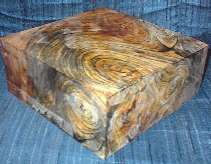
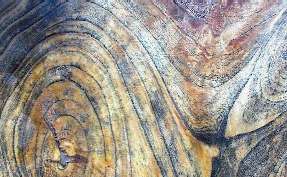
These two shots are of a piece of spalted elm that is unusual in that the spalting is obviously quite advanced but the wood is reportedly completely solid. If you are not familiar with spalting, do NOT let this piece make you think that this is what spalting often looks like. Spalting this advanced is almost always accompanied by some rot. This is a really amazing piece. It is just over 8" square by just over 3" thick and it sold on eBay for $80, which works out to $60/BF which is expensive but not at all unreasonable for such a unique piece.
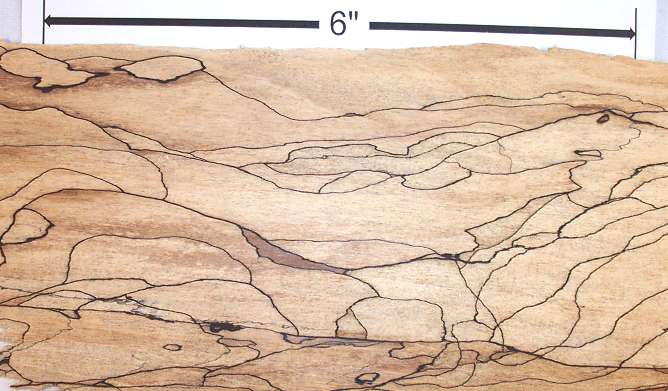
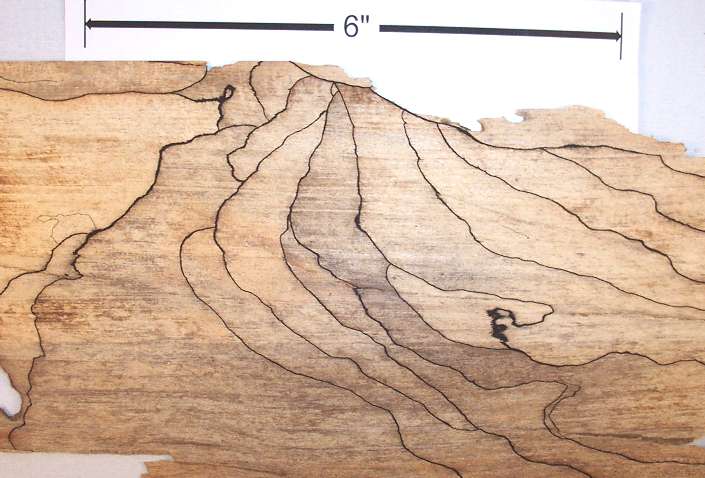
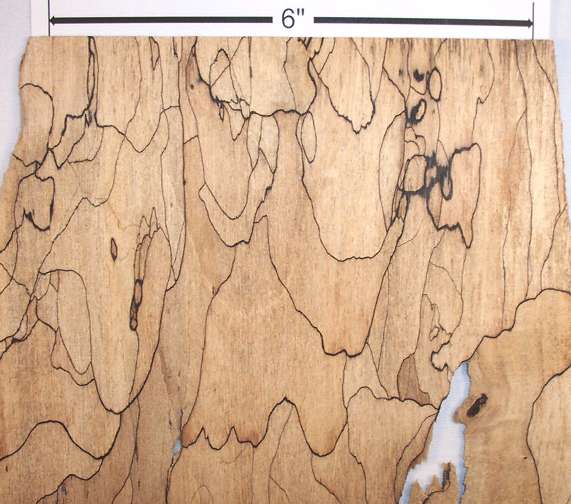
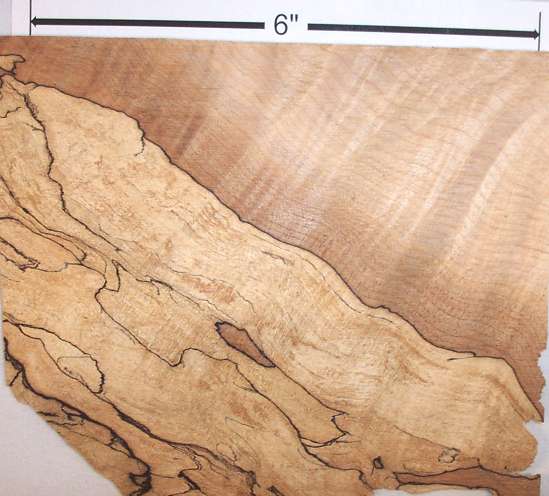
thick maple spalted veneer made by a jewelry box maker who cuts his own veneer. The last piece shows how spalting can take place right next to solid wood, although this is fairly rare since wood-rot generally comes closely on the heels of spalting.

the two sets on the left and the two sets on the right are all spalted birch mini-planks about 6" in length. The top two sets are book-matched and I believe the bottom two were cut as book-matched but gave a poor match because spalting does not run uniformly through the wood.
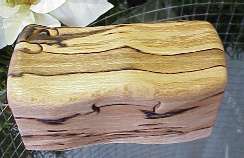
A box made from spalted sycamore
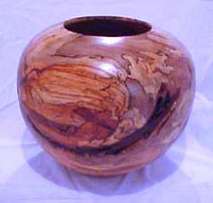
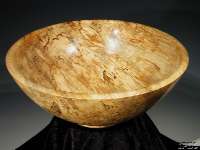
bowls made from spalted pecan and spalted maple
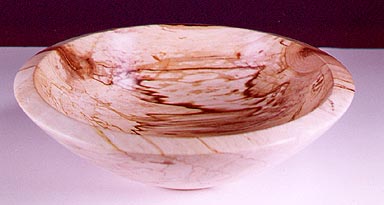
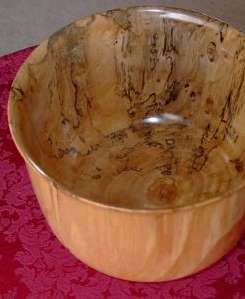
bowls made from spalted sugar maple and spalted apple. I doubt the pink color in the sugar maple (notice how the background, which was probably white, also shows up pink). Also, notice how on the apple bowl, the side facing the camera has no spalting. Spalting is unreliable and not at all uniform throughout a piece of wood.
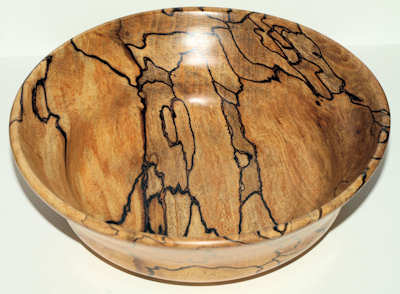
spalted beech bowl with very sharp double-blackline spalting (can been seen in great detail on the beech page)
































